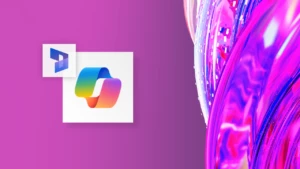
Resources and support for our global customers impacted by COVID-19
This post has been updated on June 15, 2020; for the most up-to-date information on Dynamics 365 offers, see Microsoft offers.
Over the past weeks, Microsoft has mobilized global teams to support communities and organizations affected by the COVID-19 crisis. The Microsoft Dynamics 365 and Microsoft Power Platform teams are working closely with organizations on the front lines of the crisis—including governments, healthcare providers, nonprofits, and schools and universities. We are also focusing efforts to ensure your business has the digital capabilities to maintain business continuity and stability, to the best ability possible, while keeping employees safe and healthy.
And we are hearing from organizations across industries and around the world that have an immediate need for cloud solutions to rapidly respond to quickly changing needs using custom apps and automated solutions, support remote workers, and engage customers in need. As such, we are providing support to rapidly ramp up in these areas:
Coordinate and automate emergency responses
Microsoft Power Platform was designed to empower everyone, regardless of their technical ability, to collaborate and solve problems fast. The idea that rapid, valuable innovation can come from virtually anywhere drives our development of the Power Platform, and the realization of that idea has never been more impactful than in this time of crisis. The Power Platform team is currently supporting urgent deployments for first responder organizations, government agencies, schools and universities, and other essential service providers including the release of two Power Platform solutions to enable customers to coordinate information and resources in times of crisis, and a Microsoft Power Virtual Agents bot to manage crisis response.
- Healthcare Emergency Response Resource Tracking—the Power Platform team worked with Swedish Health Services, the largest non-profit healthcare provider in the greater Seattle area, to create apps and dashboards to provide visibility into available beds and supplies like masks and ventilators. Any healthcare provider can now implement the Emergency Resource Tracking solution to manage emergency responses and equipment inventories, beds and staffing needs, and emergency leaders can leverage the decision support dashboard to make decisions. Read more about the solution and get the full instructions to implement it.
- Crisis Communications—a low-code solution that combines Microsoft Power Apps, Microsoft Power Automate, Microsoft Teams, and SharePoint to coordinate information sharing and team collaboration in response to evolving conditions. Employees can report a work status and make requests, and admins can use the app to push updates, news including RSS feeds from the World Health Organization (WHO), The Centers for Disease Control and Prevention (CDC) or local authorities, or emergency contacts to different locations—all accessible on the web, mobile, or in Teams. Read more about the solution and get instructions to implement it.
- Power Virtual Agents Crisis Response Bot—the Power Virtual Agents team has released instructions to build Virtual Agent Crisis Response FAQ Bot that helps people get to the information they need quickly in a chat interface you can embed on any website. For example, a Crisis FAQ bot can help you address questions that employees are frequently asking, freeing time for managers to focus on other priorities.
Help contact centers support unprecedented demand
The global pandemic is straining service centers everywhere, with a massive uptick in call volumes, further complicated by many agents working remotely. With omnichannel capabilities for Dynamics 365 Customer Service, contact center employees can provide consistent, personalized support while working remotely. Customers are taking advantage of the ability to gain insights into case volume topics, ensure agents are properly distributed across channels, and quickly deploy chatbots that are trained to respond to the highest volume of inquiring questions while providing consistent levels of personalized support.
For example, BYU-Pathway Worldwide is using the digital messaging capabilities in Dynamics 365 Customer Service to support the increased demand for virtual class environments due to COVID-19. With Dynamics 365 Customer Service, the University’s 120 contact center agents are able to work from home and continue to provide regular support engagements with no downtime to more than 40,000 students.
Helping retail business continuity
The COVID-19 crisis has had a broad impact on the retail sector with its effects resonating across production, supply chains, distribution, and storefronts. Consumers are making changes to their shopping habits which are resulting in a surge in demand for low or no contact purchasing options like digital commerce and curbside collection. Using Dynamics 365 Commerce our field teams are proactively working with retailers and consumer-facing businesses to optimize omnichannel commerce capabilities and enable seamless transactions across online and mobile platforms.
To support impacted retail businesses, the Dynamics 365 Commerce team will be enabling an e-commerce accelerator program including an “in a day” engagement to help retailers conceptualize and drive faster implementation of an e-commerce solution for their business. We will share more details on this in a future update including how to request a workshop and affiliated offers to help retailers in this turbulent time.
In addition, we are helping to ensure customers using Dynamics 365 Fraud Protection take control of their operational costs impacted by chargeback and returns, as well as help businesses that are new to online trading to reduce their risks, and leverage anomaly reporting and payment protection during this crisis.
Keep first-line workers connected to experts
Dynamics 365 Remote Assist allows technicians to collaborate with colleagues and experts from different locations, reducing travel and resolving some of the immediate obstacles facing us all. A medical clinician or technician maintaining critical equipment in the field, for example, can use Remote Assist on HoloLens, Android, or iOS devices while sharing an in context, real-time view of the work site with an expert working from a different location.
Reach out for assistance
We’re here to support you during the global health crisis. Please contact your Microsoft sales representative or contact our sales team via chat, phone, or email for specific guidance to help you solve business-critical challenges.



